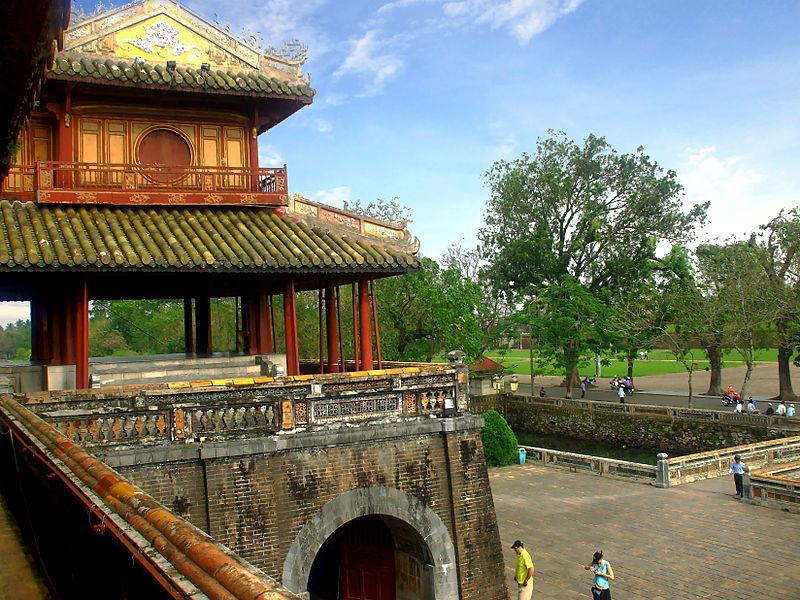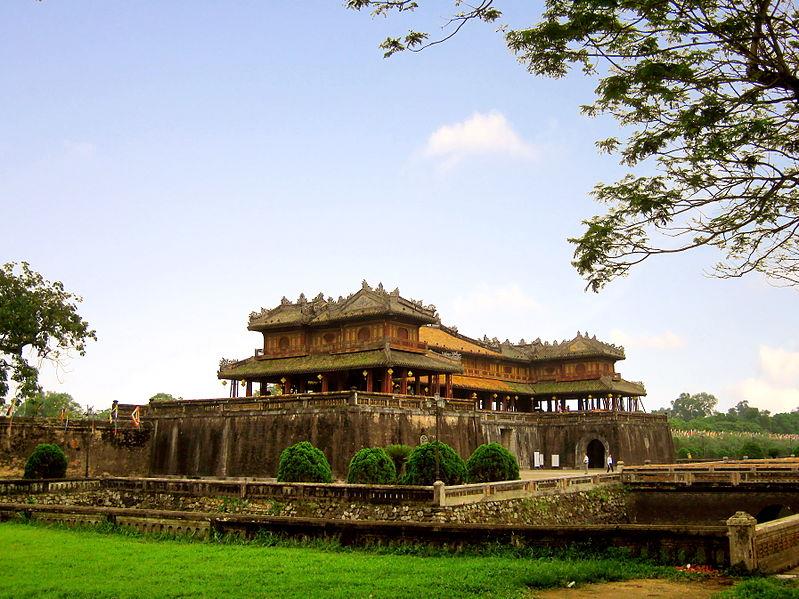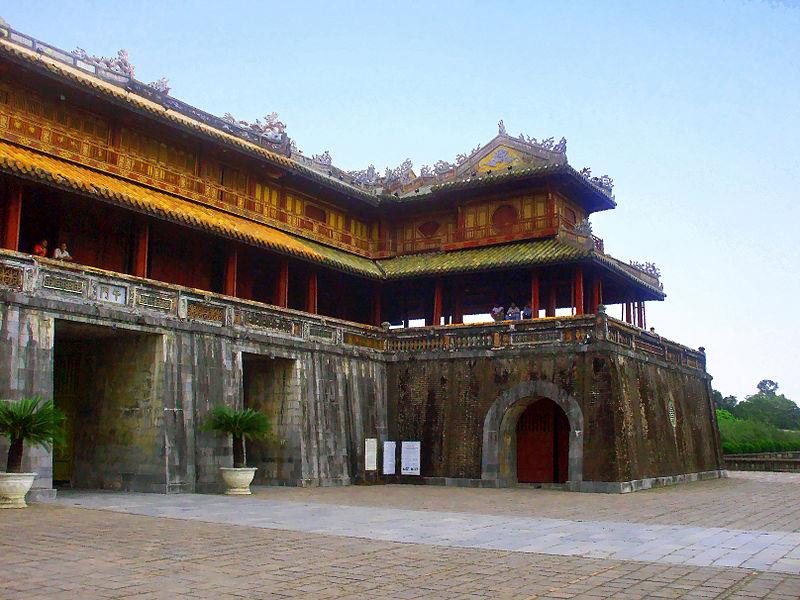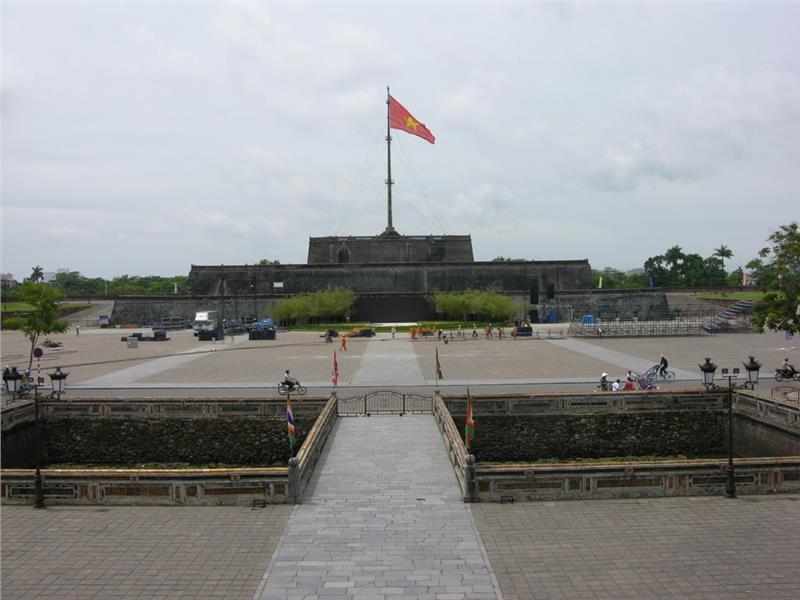Ngo Mon Gate is the main entrance in the south and the largest one in four main gates of Hue Citadel. This is an architectural work owning the highest value in the architectural ensemble of Nguyen Dynasty still existing today. Architecturally, Ngo Mon in Hue city owns some similar architectural features of Ngo Mon Gate in Beijing, yet it still clearly reflected the architectural style of Vietnam. Ngo Mon Gate faces to the South with the overall structure of perpendicular U-shaped construction, in which its bottom is located in the Citadel with arms reaching out. The main gate is divided into two parts: below is the ground level and above is a pavilion (Ngu Phung Pavilion).

The ground level is nearly 5m long. The bottom with the length of 57.77m is almost a continuation of Citadel sequence, yet the width is arranged slightly thicker. Especially, two sides of the flank protrude outer, creating a U-shaped ground with the length of 27,06m. The overhang creates the majesty and the massive physique for whole structure; simultaneously, this offers guards easy controls over the external citadel. This is one of the most popular of ancient Citadel's architecture.
The platform is pretty thick and high with almost vertical slope, creating a stable and firmly standing position but still keeping the stately sensation. There are three parallel gates in the middle of the foundation: Ngo Mon Gate (always reserved for the monarch's use only), Ta Giap Gate (on the left) and Huu Giap Gate (on the right) for civil and military mandarins. The top of five gates are built into high arch. In particular, two sides of three gates in the middle are reinforced with the system of spars and crossbar in brass. The system is wrapped a layer of laminated copper foil to create aesthetics.

The main material for building the ground level is Thanh bricks and the combination of stones from Thanh Hoa, Quang Nam, and Quang Ngai. Inside the platform are two systems of stone stairs on both two sides. In addition, around the ground is a system of railings flower wall which is decorated with many iridescent enameled bricks extremely eye-catching.
Ngu Phung Pavillion (Pavilion of Five Phoenixes) is upper part of Ngo Mon Gate, above the ground level with two floors. Large downstairs and small upstairs in combination with 13 rooms inside create a U-shaped structure like ground stations. Seen from above, nine pavilion roofs gather into a row of 5 roofs and 2 lines of 2 roofs, resembling a group of five phoenixes with beaks joined and wings spread wide. Surrounding the palace is a roofed corridor.

The roof is covered with yellow enameled tiles (yellow is the symbol for the king) and others with dark green ones. They are roofed following the Yin and Yang principle. Ngo Mon decorations are highly valued. All of tiles are enameled and designed with motifs in the roof's fringes. Many designs are along the roof ridges, including head-turning dragons, banyan leaves and bats with golden coins. Panels along the eaves are decorated with ceramic mosaics of prunes, orchid, chrysanthemum and bamboo, which are bright and harmonious, very resistant against the effects of rains, typhoons and the passage of time. Ngu Phung Pavilion owns up to 100 pillars, 48 of which lengthen throughout both floors.
In particular, Ngu Phung Pavillion is a very convenient place for tourists to admire the panoramic scenery around Hue Citadel. Keeping eyes among a large space, tourists easily realize the red flag with yellow star flying over the tops of Flag Tower. It is also a relatively large architectural works, which witnessed many important historical events. Not only retaining unique architectures, Ngo Mon Gate is also reminiscent of a feudal history.

With values of special historical architecture, Ngo Mon Gate, along with hundreds of monuments of Nguyen Dynasty's architectural ensemble is recognized as world cultural heritage by UNESCO. Ngo Mon deserves to be listed as excellent architectural works in Nguyen Dynasty in particular and in ancient Vietnam architecture in general. Simultaneously, it is a must-see rendezvous when traveling Hue.
